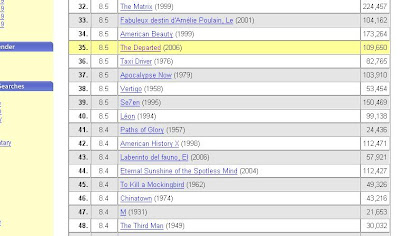
Beowulf
link
Robert Zemeckis has had a number of unqualified triumphs (the Back to the Future trilogy, Who Framed Roger Rabbit? and the underrated Contact), however he has also produced enough drivel and mediocrity to cloud those achievements. Add to that the fact that the performance capture technique developed for The Polar Express still does not convince in this trailer, stuck in the uncanny limbo where it's practically photorealistic yet still looks completely artificial. On the plus side, Neil Gaiman worked on adapting the epic poem into a screenplay, and the trailer voice-over sounds suitably ominous. Nice to hear the music from 28 Days Later too; makes a change from hearing the Requiem for a Dream score whenever the trailer factory wants something big and dramatic and epic.
The Golden Compass
link
Philip Pullman's His Dark Materials trilogy is a literary masterwork, and I will hear no opinion to the contrary. This trailer for the film adaptation of the first of the trilogy, however, suggests that the series' cinematic achievements will struggle to match its literary ones. The cast seem to fit their roles well, particularly newcomer Dakota Blue Richards in the role of Lyra, but the general art direction and cinematography seems to scream a general Hollywood blandness, all to reminiscent of the Chronicles of Narnia film. It's also dubious how well the films will tackle the novel's controversial (to say the least) religious themes. I dearly wish to be proven wrong, of course, for there is a potentially astonishing film trilogy to be made out of the novels, but for the moment I will keep my expectations cautiously low.







